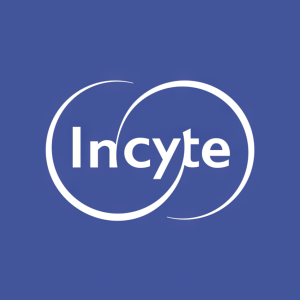Incyte Announces Updated Data Demonstrating Rapid and Durable Responses of Parsaclisib in Patients with Relapsed or Refractory B-Cell Non-Hodgkin Lymphomas
- Data from the
- Data supported Incyte’s New Drug Application (NDA) for parsaclisib accepted by the
The primary endpoint for the
Building on previous findings presented at ASH 2020, these updated data from the primary analysis continue to show treatment with parsaclisib resulted in a rapid and durable response with an acceptable safety profile, and supported the New Drug Application (NDA) for parsaclisib, recently accepted by the
Key results from the |
|||||
|
ORR ( |
CRR ( |
mDOR ( |
mPFS ( |
mOS ( |
|
|||||
DG (N=103) |
77.7 (68.4–85.3) |
19.4 (12.3-28.4) |
14.7 (10.4-NE) |
15.8 (11.0-NE) |
NR (NE-NE) |
All (N=126) |
75.4 (66.9-82.6) |
18.3 (11.9-26.1) |
14.7 (12.0-20.3) |
14.0 (11.3-19.6) |
NR (NE-NE) |
|
|||||
DG (N=72) |
58.3 (46.1-69.8) |
4.2 (0.9-11.7) |
12.2 (8.1-17.5) |
16.5 (11.5-20.6) |
NR (NE-NE) |
All (N=100) |
58.0 (47.7-67.8) |
6.0 (2.2-12.6) |
12.2 (8.1-17.5) |
16.5 (13.5-19.6) |
NR (NE-NE) |
|
|||||
DG (N=77) |
70.1 (58.6-80.0) |
15.6 (8.3-25.6) |
12.1 (9.0-NE) |
13.6 (10.0-16.9) |
NR (NE-NE) |
All (N=108) |
68.5 (58.9-77.1) |
17.6 (10.9-26.1) |
13.7 (9.0-19.9) |
11.99 (8.3-16.9) |
NR (NE-NE) |
R/R: relapsed or refractory; ORR: objective response rate; CRR: complete response rate; mDOR: median duration of response (reported for responders); mPFS: median progression-free survival; mOS: median overall survival; DG: daily dosing group; NE: not estimable; NR: not reached. |
|||||
Parsaclisib was generally well tolerated in all studies with a manageable safety profile.
“We are pleased to share these updated results from the
“Non-Hodgkin lymphoma is composed of varying subtypes and is one of the most common cancers in
Presentations can be accessed via the ASH website at https://www.hematology.org/meetings/annual-meeting; #813 (Oral presentation,
About Follicular,
Non-Hodgkin lymphoma (NHL) is a type of cancer that starts in the lymphocytes, a type of white blood cell. Follicular lymphoma (FL), marginal zone lymphoma (MZL) and mantle cell lymphoma (MCL) are forms of B-Cell NHLs. FL and MZL are indolent or slow growing lymphomas; MCL is an aggressive or rapidly developing form. There is an unmet medical need for treatment options for patients who are relapsed or refractory to initial therapies.
About
-
CITADEL -203 (NCT03126019) is evaluating patients with relapsed or refractory follicular lymphoma (FL) Grade 1, 2 or 3a who received at least two prior systemic therapies, had anEastern Cooperative Oncology Group performance status (ECOG PS) ≤2, and were ineligible for hematopoietic stem cell transplantation (HSCT). -
CITADEL -204 (NCT03144674) is evaluating patients with relapsed or refractory marginal zone lymphoma (MZL) who received at least one prior systemic therapy and were Bruton’s tyrosine kinase (BTK) inhibitor treatment naive. Patients with prior ibrutinib treatment were initially allowed to enroll; however, the cohort was terminated due to slow enrollment. Eligible patients had radiologically measurable lymphadenopathy or extranodal lymphoid malignancy (or histologically confirmed bone marrow infiltration in cases of splenic MZL), and an ECOG PS ≤2. -
CITADEL -205 (NCT03235544) is evaluating patients with relapsed or refractory mantle cell lymphoma (MCL), who received one to three prior systemic therapies and were either naive to or were previously treated with a BTK inhibitor. Eligible patients had an ECOG PS ≤2, and radiologically measurable lymphadenopathy or extranodal lymphoid malignancy.
Patients eligible for each trial were allocated to receive parsaclisib 20 mg once daily for eight weeks followed by either 20 mg once weekly (weekly-dosing group [WG]) or 2.5 mg once daily (daily-dosing group [DG]). Subsequently, daily dosing was selected as the preferred regimen and the WG patients were allowed to switch to DG. Prophylaxis for Pneumocystis jirovecii pneumonia (PJP) was required.
About Parsaclisib
Parsaclisib is a potent, highly selective, next-generation investigational novel oral inhibitor of phosphatidylinositol 3-kinase delta (PI3Kδ). It is currently under evaluation as a monotherapy in several ongoing Phase 2 trials as a treatment for non-Hodgkin lymphomas (follicular, marginal zone and mantle cell); and autoimmune hemolytic anemia. Pivotal trials of parsaclisib in combination with ruxolitinib for the treatment of patients with myelofibrosis are underway; and there are plans to initiate trials to evaluate parsaclisib in combination with tafasitamab, including a pivotal trial in B-cell malignancies.
In
About
Forward-Looking Statements
Except for the historical information set forth herein, the matters set forth in this press release, including statements about the potential of parsaclisib to provide a meaningful treatment for patients with non-Hodgkin lymphomas, including follicular lymphoma, marginal zone lymphoma and mantle cell lymphoma, the
These forward-looking statements are based on the Company’s current expectations and subject to risks and uncertainties that may cause actual results to differ materially, including unanticipated developments in and risks related to: unanticipated delays; further research and development and the results of clinical trials possibly being unsuccessful or insufficient to meet applicable regulatory standards or warrant continued development; the ability to enroll sufficient numbers of subjects in clinical trials and the ability to enroll subjects in accordance with planned schedules; the effects of the COVID-19 pandemic and measures to address the pandemic on the Company’s clinical trials, supply chain and other third-party providers, sales and marketing efforts and business, development and discovery operations; determinations made by the FDA or other regulatory authorities; the efficacy or safety of the Company’s products; the acceptance of the Company’s products in the marketplace; market competition; sales, marketing, manufacturing and distribution requirements; greater than expected expenses, including expenses relating to litigation or strategic activities; and other risks detailed from time to time in the Company’s reports filed with the
View source version on businesswire.com: https://www.businesswire.com/news/home/20211211005002/en/
Media
jantonacci@incyte.com
cloveman@incyte.com
Investors
cchiou@incyte.com
Source:







